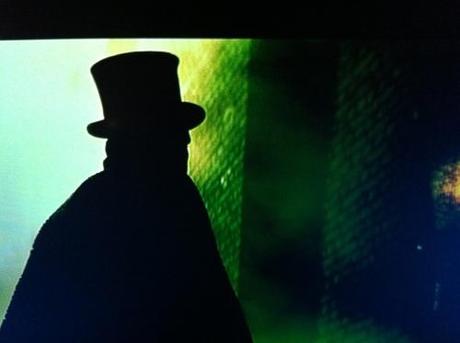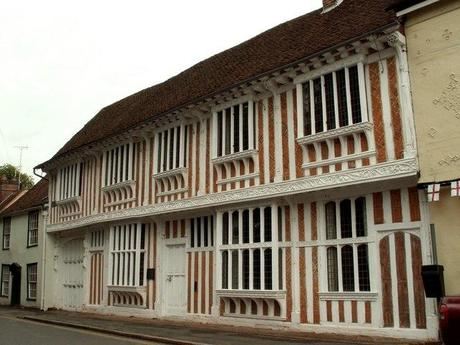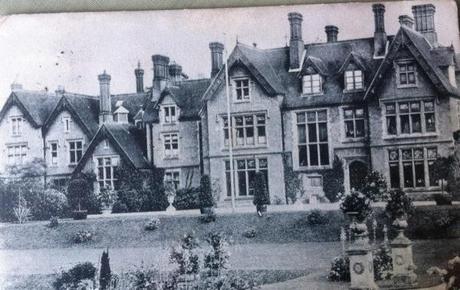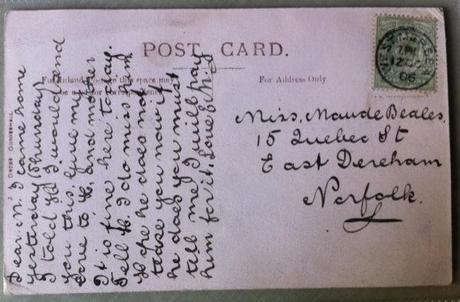
Still from From Hell.
It’s all Jack the Ripper’s fault. Isn’t it always? I clicked on a link about the latest completely ridiculous theory about the identity of Victorian London’s most notorious murderer and was both amused and surprised to find that according to some professor in Uruguay, the Ripper came from Coggeshall in Essex, which is also where I come from. Small world, isn’t it?
This then led to a bit of a chat with my Bristolian born and bred husband, who has never been to Coggeshall and like a lot of people who have a rather touching tendency to believe whatever they see on television, has this idea that Essex is this hideous, rough place full of orange women, heavily modded cars, young men who think they are gangsters and drunken iniquity. He’s not wrong about some little pockets of Essex but MY Essex, the bit that I come from isn’t anything like that.
It’s more like this…

Paycockes, Coggeshall. Photo: Robert Edwards.
This is Paycockes, which is a National Trust property in Coggeshall. Pretty isn’t it? This style of architecture isn’t actually all that unusual in Coggeshall, a town founded upon the wealth of Medieval wool merchants. The winding streets are truly lovely with their pastel painted ramshackle little houses with exposed beams, the occasional straw roof and higgledy piggledy windows. I haven’t been back since I left to go to university, but I still dream about it often as it is such an important part of me.
Of course, idle chats generally lead to idle Googling and that’s how I found an Ebay listing for a postcard of the house, just outside Coggeshall, where I spent my teens. My husband thinks it’s a bit weird that I immediately bought it, seeing as it’s a house that we don’t actually live in, but I think he’s just envious because no one has ever bothered to make a postcard of the house HE grew up in.

Isn’t it lovely? It’s still a private family home today so I’m going to be relatively discreet about the actual details but suffice to say that it was a wonderful place to grow up. I spent MANY many happy hours rambling around the attics and splendid reception rooms, which were lined with beautiful portraits from the seventeenth century onwards and sweeping up and down the magnificent wooden staircase, pretending that I was the Duchess of Devonshire or Lady Jane Grey or Mary, Queen of Scots on her way to execution. I also loved the cellars that stretched beneath the house and used to pretend that they were the cells of the Conciergerie during the Terror.
Oh and fans of my books may like to know that I wrote my first novel (based onThe Highwayman by Alfred Noyes) and also the first draft of the book that would one day become Blood Sisters while sitting in a window seat that lay behind one of the tall windows on the left hand side. I was fourteen at the time and already well used to dreaming about far away places and times.
People often ask why I don’t write about houses like this one in my novels. I suppose the simplest answer is that they seem pretty ordinary to me and I don’t feel inspired by them. However, that sounds a bit intolerably snooty, doesn’t it? Perhaps I should remember that although the crunch of gravel beneath a tyre wheel as a car sweeps around a curving drive or the soft slip of polished wood beneath your hand as you walk with stately grace down a creaking staircase, followed by the eyes of ladies in crinolines and gentleman on horseback is something that I grew up with, that’s not the case for most people.
The other thing, I suppose, is that I never think people are all that interested in houses like this one and I have also learned over time to keep quiet about having lived here. I was sent to the local school and was bullied because of where I lived. People spat at me in corridors, shouted ‘SCUM’ at me as I played hockey and mocked me relentlessly because I didn’t live as they did. I remember making friends with a boy from the local council estate and inviting him to visit me at home. I was nervous as hell, hoping that he wouldn’t think us all stuck up and hopelessly old fashioned with our wood fires, old pictures, shabby curtains and creaky stairs but I need not have feared, he wore an expression of bored contempt the whole time he was there and then duly reported back to school that I lived in ‘a dump’. Of course, some people wanted to be friends with me too, once they found out where I lived and that there was a huge garden with a swimming pool in one corner so it wasn’t all bad…
I love the postcard, despite it possibly being ‘weird’ that I wanted to own it. I shall hang it on my study wall to remind me of my past and to give me something to daydream about when I’m feeling uninspired by my own surroundings (which aren’t bad – I live in a lovely, airy, big Victorian house in Bristol but it’s not a patch on the Essex house’s redbrick Victorian gothic grandeur). Also, typically, this house has a very tenuous connection to the Ripper case of its own, quite besides the date ’1888′ being emblazoned on a plaque on the gatehouse. The mansion itself was built by the Hanbury family, part of the Hanbury brewing family of Spitalfields who lent their name to Hanbury Street, where of course Annie Chapman’s body was found in the same year as they, contented and retired to the Essex countryside, were working on their house of dreams.

I’m also thrilled that the postcard arrived with an unexpected treat – some writing on the back. And now, of course, I’m wondering why the unknown E.M thought Miss Maude Beales of East Dereham would be interested in this house too so that’s something new to discover!
